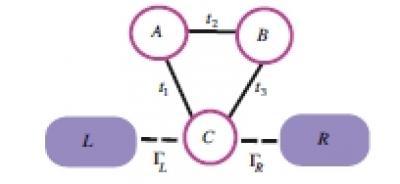Quantum computers have yet to materialise. Yet, scientists are making progress in devising suitable means of making such computers faster. One such approach relies on quantum dots—a kind of artificial atom, easily controlled by applying an electric field. A new study demonstrates that changing the coupling of three coherently coupled quantum dots (TQDs) with electrical impulses can help better control them. This has implications, for example, should TQDs be used as quantum information units, which would produce faster quantum computers due to the fact that they would be operated through electrical impulses. These findings have been published in EPJ B by Sahib Babaee Tooski and colleagues affiliated with both the Institute of Molecular Physics at the Polish Academy of Sciences, in Poznan, Poland, the University of Ljubljana and the Jožef Stefan Institute in Slovenia.
The authors study the interplay between internal electrons—which, due to electron spins, are localised on the different quantum dots. They then compare them with the interactions of the conducting electrons, which, at low temperature, can increase the electrical resistance, due to what is referred to as the Kondo effect. This effect can be induced by coupling one of the quantum dots with the electrodes.
Tooski and colleagues thus demonstrate that by changing the coupling of the quantum dot with the electrodes, they can help induce the quantum phase transition between entangled and disentangled electron states. Such variations are typically detectable through a sudden jump in the entropy and the spin susceptibility. However, theoretical investigations outlined in the paper and based on numerical renormalisation group analysis suggest that the detection of such change is best achieved by measuring the electrical conductance. This is because, as the authors show, the conductance should be different for the entangled and disentangled states.

One approach of making computers faster relies on quantum dots, a kind of artificial atom, easily controlled by applying an electric field. A new study demonstrates that changing the coupling of three coherently coupled quantum dots with electrical impulses can help better control them.
(Photo Credit: Tooski, S. B. et al.)
Source: Springer